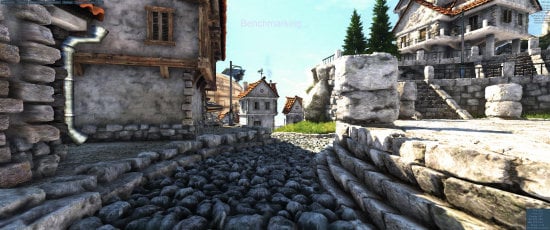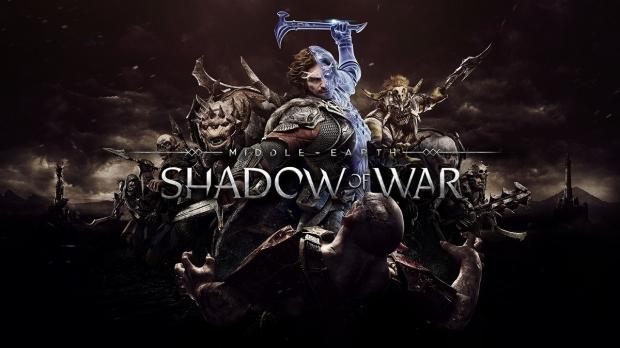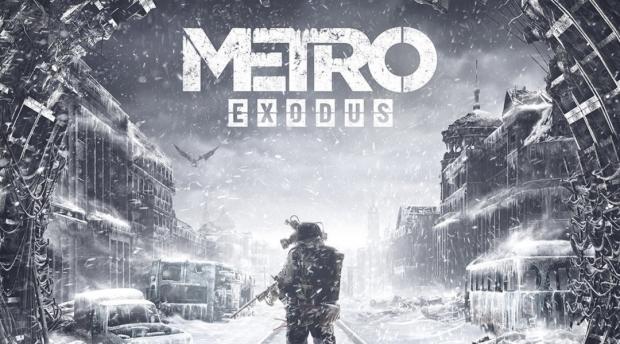
The Bottom Line
Introduction
I've been waiting for a flagship Radeon RX 5700 XT from SAPPHIRE and it's finally here, the company merely teased us with the RX 5700 XT PULSE OC, as the real deal is the new RX 5700 XT NITRO+ OC graphics card.
SAPPHIRE's new flagship Radeon RX 5700 XT is one of the best looking custom Navi cards, with the company using its fresh ARGB Lighting system that you can see in the pics on this page and more so on the Detailed Look page further on in the review.
There have been a few different custom Radeon RX 5700 XT through my doors over the last couple of weeks, but is SAPPHIRE's new RX 5700 XT NITRO+ OC worth it over the rest? That's something you'll have to continue to read on about, and while it falls in line with the other custom RX 5700 XT cards, SAPPHIRE does it with its own tweaks.
Some of those include the kick-ass ARGB Lighting on the NITRO+ OC making it look great inside of your gaming PC, but then there's the new TriXX software that has some pretty amazing tricks up its sleeve. This is something I'm going to get into post-review in a follow up article, but it's something that SAPPHIRE has exclusive and it's an exciting feature.
SAPPHIRE's exclusive TriXX Boost technology will reduce the rendering resolution of any game, and then upscale the final image using Radeon Image Sharpening. This means you gain performance, while only dropping image quality a little. It requires some more testing before I have an article out for it, but it's an exciting thing to test from SAPPHIRE.
As for the card itself, we're looking at around $440 or so -- not much more than the stock Radeon RX 5700 XT at $399. You will get a much cooler operating card that also looks a helluva lot better, and the kick ass ARGB Lighting technology -- and you can't forgett SAPPHIRE's new TriXX Boost option.
Detailed Specs
SAPPHIRE is offering what most other custom Radeon RX 5700 XT graphics cards are capable of with the Navi 10 GPU -- boosting up to 2010MHz. This provides virtually identical performance to any of the custom RX 5700 XT cards.
Breaking the GPU speeds up, we have:
- Base GPU clock - 1770MHz
- Game GPU clock - 1905MHz
- Boost GPU clock - up to 2010MHz
There's 8GB of GDDR6 at stock 14Gbps on a 256-bit memory bus, with 3 x DP 1.4 connectors and a single HDMI connector -- all of it slotting into a PCIe 3.0/4.0 x16 port with PCIe 4.0 compatibility.
Cooling Tech: SAPPHIRE Tri-X
SAPPHIRE uses its Tri-X cooling solution on the new Radeon RX 5700 XT NITRO+ OC, keeping temps to an average of 66C. The Tri-X cooling system is a triple-fan solution that has two larger fans out the outside, with a smaller fan on the inside that spins in reverse to the larger two.
This increases the airflow beneath the fans, which ensures more airflow across the card keeping the heat sink as cool as it can, but also keeping the noise down.
You're getting a chunky heat sink from SAPPHIRE, something that has its ARGB Lighting right into the backplate. I *love* this.
Detailed Look
SAPPHIRE has spruced up the box for its new flagship Radeon RX 5700 XT NITRO+ OC graphics card, which you'll see below:
The front of the box not look like much, but it has the same hexagon-like pattern that the card has splashed on its gorgeous backplate.
The back of the box shows what the key features are with the card, as well as teasing the all-new ARGB Lighting system (which looks oh-so-good and it's too over the top).
SAPPHIRE's new Radeon RX 5700 XT NITRO+ OC in all its glory, showing off its triple-fan cooler at the front.
One of the best backplates of the custom RX 5700 XT cards, that's for sure. Check it out in my test bed:
From the top of the card it might look plain, but in the system with the ARGB Lighting on it looks glorious.
You can see here you'll need dual 8-pin PCIe power connectors, too.
Another shot, this time from the bottom of the card.
Another shot of the backplate.
Display connectivity consists of 2 x DP and 2 x HDMI.
Test System Specs
Our New GPU Test Rig
Welcome to the latest revision of our GPU test bed, with our system being upgraded from the Intel Core i7-7700K to the Core i7-8700K. The CPU is cooled by the Corsair H115i PRO cooler, with the 8700K overclocked to 5GHz. We've stayed with GIGABYTE for our motherboard with their awesome Z370 AORUS Gaming 7.
We approached our friends at HyperX for a kit of their kick ass HyperX Predator DDR4-2933MHz RAM (HX429C15PB3AK4/32), with 2 x 8GB sticks for a total of 16GB DDR4-2933. The RAM stands out through every minute of our testing as it has beautiful RGB lights giving the system a slick look while benchmarking our lives away, while the Z370 AORUS Gaming 7 motherboard joins in with its own array of RGB lighting.
Detailed Tech Specs
- CPU: Intel Core i7-8700K @ 5GHz
- Cooler: Corsair Hydro Series H115i PRO
- MB: Z370 AORUS Gaming 7
- RAM: 16GB (2x8GB) HyperX Predator DDR4-2933
- SSD: 1TB OCZ RD400 NVMe M.2
- SSD: 512GB OCZ RD400 NVMe M.2
- PSU: InWin 1065W PSU
- Chassis: In Win X-Frame
- OS: Windows 10 Pro x64
Additional Images
Benchmarks - Synthetic
3DMark Fire Strike - 1080p
3DMark has been a staple benchmark for years now, all the way back to when The Matrix was released and Futuremark had bullet time inspired benchmarks. 3DMark is the perfect tool to see if your system - most important, your CPU and GPU - is performing as it should. You can search results for your GPU, to see if it falls in line with other systems based on similar hardware.
3DMark Fire Strike - 1440p
3DMark has been a staple benchmark for years now, all the way back to when The Matrix was released and Futuremark had bullet time inspired benchmarks. 3DMark is the perfect tool to see if your system - most important, your CPU and GPU - is performing as it should. You can search results for your GPU, to see if it falls in line with other systems based on similar hardware.
3DMark Fire Strike - 4K
3DMark has been a staple benchmark for years now, all the way back to when The Matrix was released and Futuremark had bullet time inspired benchmarks. 3DMark is the perfect tool to see if your system - most important, your CPU and GPU - is performing as it should. You can search results for your GPU, to see if it falls in line with other systems based on similar hardware.
3DMark TimeSpy
3DMark TimeSpy Extreme
Heaven - 1080p

Heaven is an intensive GPU benchmark that really pushes your silicon to its limits. It's another favorite of ours as it has some great scaling for multi-GPU testing, and it's great for getting your GPU to 100% for power and noise testing.
Heaven - 1440p
Heaven - 4K
Benchmarks - 1080p
1080p Benchmarks

Middle-earth: Shadow of War is a sequel to the popular Shadow of Mordor, which was powered by the Lithtech engine. When cranked up to maximum detail, it will chew through your GPU and its VRAM like it's nothing.
You can buy Middle-earth: Shadow of War at Amazon.

Metro Exodus is one of the hardest tests that our graphics cards have to go through, with 4A Games' latest creation being one of the best looking games on the market. It is a serious test that pushes GPUs to their limits, and also features RTX technologies like DLSS.

Far Cry New Dawn was developed by Ubisoft, and is powered the Dunia Engine, an engine that has been modified over the years for Far Cry and last used in Far Cry 5. Dunia Engine itself was a modified version of CRYENGINE, scaling incredibly well on all sorts of hardware.

Shadow of the Tomb Raider is one of the latest games to join our graphics card benchmark lineup, with the game built using the Foundation engine as a base, the same engine in Rise of the Tomb Raider. Eidos Montreal R&D department made lots of changes to the engine during the development of Shadow of the Tomb Raider to make it one of the best-looking games out right now.
Benchmarks - 1440p
1440p Benchmarks

Middle-earth: Shadow of War is a sequel to the popular Shadow of Mordor, which was powered by the Lithtech engine. When cranked up to maximum detail, it will chew through your GPU and its VRAM like it's nothing.
You can buy Middle-earth: Shadow of War at Amazon.

Metro Exodus is one of the hardest tests that our graphics cards have to go through, with 4A Games' latest creation being one of the best looking games on the market. It is a serious test that pushes GPUs to their limits, and also features RTX technologies like DLSS.

Far Cry New Dawn was developed by Ubisoft, and is powered the Dunia Engine, an engine that has been modified over the years for Far Cry and last used in Far Cry 5. Dunia Engine itself was a modified version of CRYENGINE, scaling incredibly well on all sorts of hardware.

Shadow of the Tomb Raider is one of the latest games to join our graphics card benchmark lineup, with the game built using the Foundation engine as a base, the same engine in Rise of the Tomb Raider. Eidos Montreal R&D department made lots of changes to the engine during the development of Shadow of the Tomb Raider to make it one of the best-looking games out right now.
Benchmarks - 4K
4K Benchmarks

Middle-earth: Shadow of War is a sequel to the popular Shadow of Mordor, which was powered by the Lithtech engine. When cranked up to maximum detail, it will chew through your GPU and its VRAM like it's nothing.
You can buy Middle-earth: Shadow of War at Amazon.

Metro Exodus is one of the hardest tests that our graphics cards have to go through, with 4A Games' latest creation being one of the best looking games on the market. It is a serious test that pushes GPUs to their limits, and also features RTX technologies like DLSS.

Far Cry New Dawn was developed by Ubisoft, and is powered the Dunia Engine, an engine that has been modified over the years for Far Cry and last used in Far Cry 5. Dunia Engine itself was a modified version of CRYENGINE, scaling incredibly well on all sorts of hardware.

Shadow of the Tomb Raider is one of the latest games to join our graphics card benchmark lineup, with the game built using the Foundation engine as a base, the same engine in Rise of the Tomb Raider. Eidos Montreal R&D department made lots of changes to the engine during the development of Shadow of the Tomb Raider to make it one of the best-looking games out right now.
Thermals & Power
Thermals
During all of my benchmarking and gaming on the SAPPHIRE Radeon RX 5700 XT NITRO+ OC the card stayed at an average of 66C, bumping up to around 68C at times but coming down into 67C and falling into 66C. It didn't make much noise at all, and is much quieter than AMD's reference RX 5700 XT.
Power
SAPPHIRE's new Radeon RX 5700 XT NITRO+ OC actually used a considerable amount of power, topping out at around 360W for my entire Core i7-8700K test rig. Other custom RX 5700 XT cards hit 330W total, so we're only talking about 30W -- but it's worth noting.
Final Thoughts
SAPPHIRE has another great custom Radeon RX 5700 XT on its hands with its new flagship RX 5700 XT NITRO+ OC, something that would slot right into any gamers PC and give them a huge injection of awesome.
Not only does it look great, but the SAPPHIRE RX 5700 XT NITRO+ OC also has better-than-reference performance. It's up there with the fastest custom RX 5700 XT graphics cards, so the purchasing decision is going to come to exclusive features and the look and style. This matters, because you're not just buying an old IBM machine anymore -- RGB and style counts now, yo.
When it comes down to exclusive features, that's an area where this time around SAPPHIRE has something very useful and actually provides more performance. It's not like SAPPHIRE's TriXX software just tweaks your RGB, but it has up to 15% more performance at 4K -- something I will be testing in more detail soon.
SAPPHIRE also has some nice touches like Fan Health Check which lets you check the health of the trio of fans on the RX 5700 XT NITRO+ OC, with the TriXX software also letting you switch between the two BIOSes on the card as well as tweak the Nitro Glow ARGB lighting.
SAPPHIRE also offers an optional upgrade to the Radeon RX 5700 XT NITRO+ OC with some ARGB fans, with the three fans featuring RGB lighting that better matches the card. I've reached out to SAPPHIRE about getting some of these fans, and then I'll have a follow up piece that'll give you a look at what the RX 5700 XT NITRO+ OC looks like with the optional ARGB fans.
All-in-all, a stellar graphics card from SAPPHIRE -- it almost feels like a return to force from the company with the new RX 5700 XT NITRO+ OC... and with all of the tweaks to the card in both style and design as well as in software -- I now want to see SAPPHIRE release a TOXIC version of the RX 5700 XT.
SAPPHIRE is reportedly working on a new custom Navi-based TOXIC graphics card that I'm sure would arrive in the form of the Radeon RX 5700 XT TOXIC... and in previous rumors was water-cooled. Slowly but surely SAPPHIRE could really come back into the game and fill out a family of kick ass Radeon graphics cards, the last of which we saw during the Hawaii-based R9 200 series cards.
SAPPHIRE -- it's great to see you back and swinging with the new RX 5700 XT NITRO+ OC... a true treat for SAPPHIRE and Radeon gamers.
Performance (overclocking, power) |
100% |
Quality (build, design, cooling) |
95% |
General Features (display outputs, etc) |
90% |
Bundle, Packaging & Software |
95% |
Overall |
95% |
SAPPHIRE's return to form: the new Radeon RX 5700 XT NITRO+ OC is an absolutely stellar custom Navi graphics card. It offers great performance, some kick ass new features in its TriXX Boost software, and looks AWESOME. Nice work, SAPPHIRE!

What's in Anthony's PC?
- CPU: Intel Core i5-12600K
- MOTHERBOARD: GIGABYTE Z690 AERO-G
- RAM: Corsair 32GB DDR4-3200
- GPU: NVIDIA GeForce RTX 4090 24GB
- SSD: Sabrent 4TB Rocket 4 Plus
- OS: Windows 11 Pro
- CASE: Lian Li O11 Dynamic XL
- PSU: ASUS ROG Strix 850W
- KEYBOARD: Logitech G915 Wireless
- MOUSE: Logitech G502X Wireless
- MONITOR: LG C3 48-inch OLED TV 4K 120Hz
Similar Content
Related Tags




















































